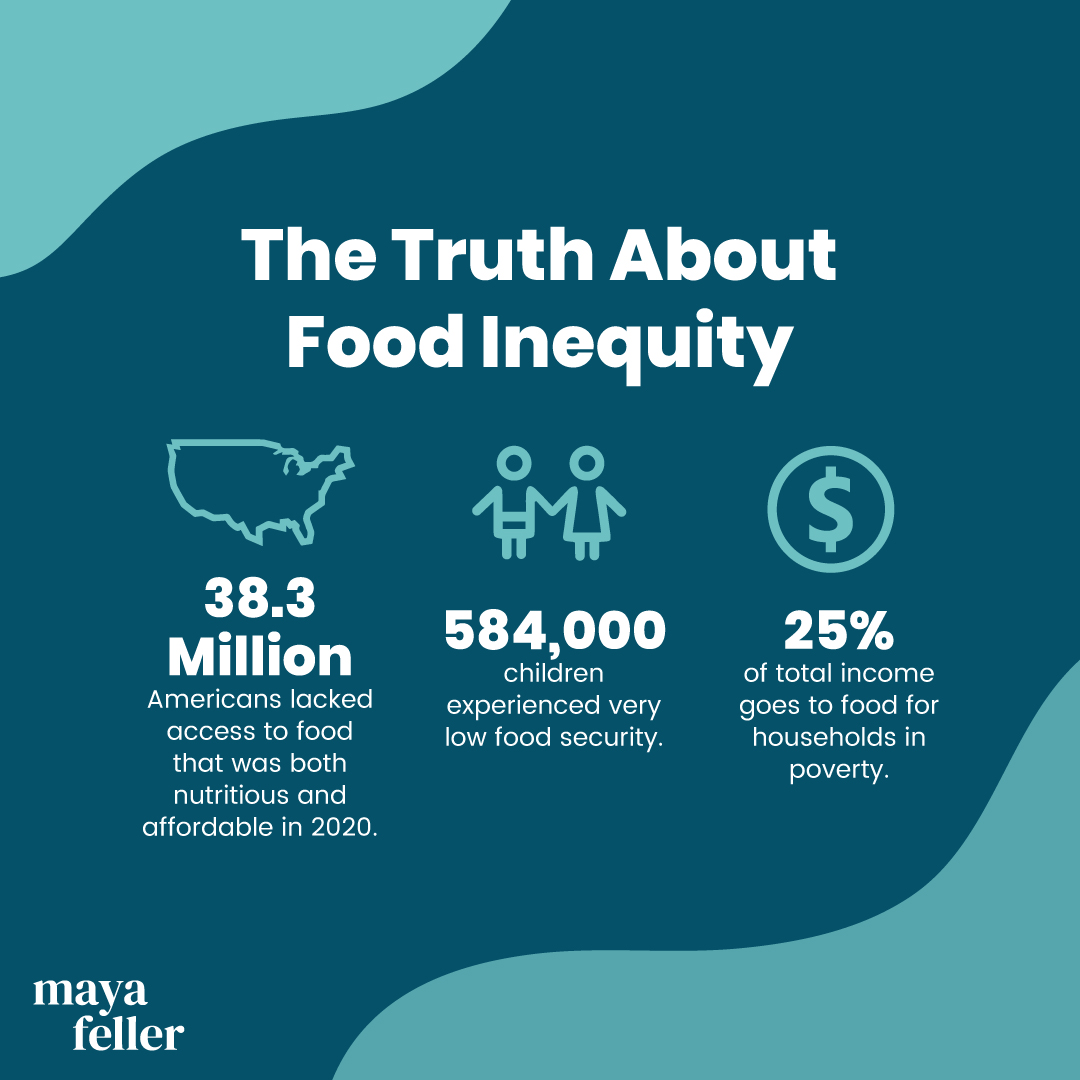The Fight For Food Equity: What You Need To Know & How To Help
There is a prevalent and pressing issue that is impacting the globe: the lack of food equity, also known as food inequity.
A staggering 663 million people are undernourished throughout the world, and 1 in 4 people are either moderately or severely food insecure. That’s 1.9 billion people. [1]
And it happens everywhere, making it far more common than many realize. But why does this occur? And what can you do to help promote food equity?
Keep reading to learn all about food inequity, why it’s an ongoing issue, and what you can do about it to help others have adequate access to nutritional food.
What is Food Equity?
Food equity refers to the concept that access to safe, affordable and nutritious food is a human right.
All people across the world, irrespective of their race, ethnicity, gender, and economic status, should have the right to grow and/or access and consume nutrient-dense foods that are both affordable and culturally preferred.
It’s something we should all be seeking to obtain, yet the reality is that if it isn’t an issue for us personally, it’s easy to deprioritize.
But think for a moment about how food equity and inequity play a role in your everyday life.
For example, it’s normal in life to form favorites. Favorite clothes, favorite foods, and even favorite grocery stores—we all have them.
Now, think for a moment: What makes your favorite grocery store your preferred choice? Is it the freshness of the produce, the aesthetics of the store, or the variety of options offered?
Next, think of the characteristics of your least favorite grocery store. Does it offer less nutrient-dense foods, or is the produce less aesthetically pleasing?
Many times, the reasons that these stores vary so greatly is due to food inequities within the food system. Food inequity refers to a situation in which there are obstacles that prevent communities from accessing healthy foods due to issues with affordability and/or sustainability.
What Specific Problems Do We Face?
As this issue begins to become more publicized, more people are starting to fight for communities to have food equity.
Food equity is imperative because many communities—especially those located in rural and urban areas—are composed primarily of Black, Brown, and Indigenous people with lower incomes who as a result of systemic inequities struggle to consume foods that meet their nutritional needs.
For example, let’s take a look at the problems we face here in the U.S.
According to the USDA, in 2020 alone, 38.3 million Americans lacked access to food that was both nutritious and affordable, while more than half a million children experienced very low food security. [2]
Speaking of affordability, with the rising costs of food, the same data revealed that average food spending in the U.S. is about 11 percent of a household’s income, yet households in poverty can spend more than 25 percent on food.
Now, I also need to mention another problem encountered by those who don’t reside in a food equitable community: They are less likely to know where their food was grown before they received it.
As a result, this could mean that items such as their produce are traveling farther distances, resulting in the consumption of less fresh food and an overconsumption of processed foods, which means a loss of nutrients. [3]
Whereas stores who purchase from a local farm or vendor understand how their food is being handled from start all the way until it is in the consumer’s hand.
Additionally, research has shown that lower wages and income earned by farmworkers are correlated to attributes such as gender, age, being foreign-born, being unauthorized, being a migrant worker, or being a border region worker. [4]
The takeaway here is that when these workers who are responsible for providing food to the masses earn less, it contributes to an inability to afford higher nutrient foods, which can lead to malnourishment. As you can see, it’s cyclical.
What Are the Best Solutions to Food Inequity?
As I’ve mentioned before, our bodies require us to have access to safe, affordable, nutritional foods in order to function properly.
Making change requires that we actively prioritize the health and well-being of others. Communities seeking food equity should not go without, and there are ways to help. Here are a few of the top ways you can help increase awareness about the importance of food equity.
1. Acknowledge and address systemic inequities.
It’s vital that we begin listening to those in the communities most often impacted by food inequity.
The systemic inequities that communities across the nation face due to race, immigration status, and economical status is contributing to a deficit in our food system. Until we acknowledge this and support the voices in these communities, our system will remain broken.
2. Volunteer at or start a local garden.
It can be daunting to think of achieving food equity on a global scale, but you can make a big difference in your local community.
Whether you volunteer at a local garden or even start one of your own, providing residents with nutrient-dense foods that they can feel confident consuming is a huge step in the right direction.
3. Contact your local and state government officials.
Finally, remember that your local and state officials were elected to represent you. So, don’t be afraid to voice your concerns and request them to establish policies to improve local and state-wide food equity.
Don’t forget to ask questions about what they’re doing to help support the local economy, which will help to make nutrient-dense foods more affordable, and ongoing food education, which could help people to learn to grow their own foods.
Keep in mind that the fight for food equity is an ongoing issue and not one that can be solved overnight. But if we all come together, we can achieve great progress to bring nutritious foods to all.



Leave a Reply